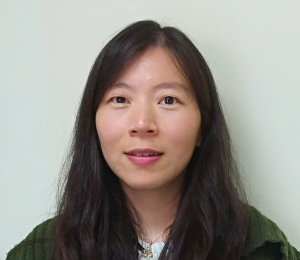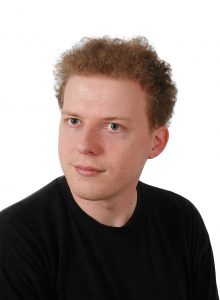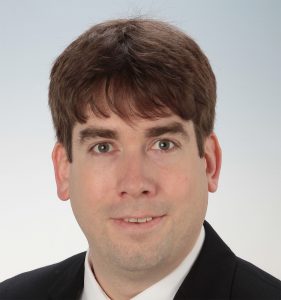
C4: News
2019 Young Scientist Prize Winners for the Commission on Astroparticle Physics (C4)
Siyao Xu, PhD
Hubble Fellow, University of Wisconsin-Madison, USA
 Dr. Siyao Xu, received the 2019 IUPAP Young Scientist Award during the 36th International Cosmic Ray Conference held in Madison, USA for fundamental theoretical contributions to Astroparticle physics that reveal profound connections among diverse phenomena.”
Dr. Siyao Xu, received the 2019 IUPAP Young Scientist Award during the 36th International Cosmic Ray Conference held in Madison, USA for fundamental theoretical contributions to Astroparticle physics that reveal profound connections among diverse phenomena.”
Siyao Xu is currently a Hubble Fellow at the University of Wisconsin-Madison. She completed her Ph.D at Peking University (Beijing, China) under the supervision of Professor Bing Zhang in 2017. Her thesis on magnetohydrodynamics (MHD) turbulence and its astrophysical applications was recognized with the 2017 International Astronomical Union (IAU) Ph.D Prize and the 2019 Cecilia Payne-Gaposchkin Doctoral Dissertation Award in Astrophysics. Her research focuses on understanding of the fundamental physics of cosmic ray propagation and particle acceleration in high-energy astrophysical environments. Her work demonstrates that the key to studying cosmic ray propagation is to obtain a proper description of MHD turbulence. Her pioneering theoretical studies have been applied for addressing diverse and long-standing astrophysical problems related to gamma-ray bursts, pulsar wind nebulae, and supernova remnants to name a few.
Anna Nelles, PhD
DESY Zeuthen and F.A. University Erlangen, Germany
 Prof. Anna Nelles, received the 2019 IUPAP Young Scientist Prize during the 36th International Cosmic Ray Conference in Madison, USA for her outstanding contributions to the development of the new technique of the radio detection of cosmic rays and neutrinos.
Prof. Anna Nelles, received the 2019 IUPAP Young Scientist Prize during the 36th International Cosmic Ray Conference in Madison, USA for her outstanding contributions to the development of the new technique of the radio detection of cosmic rays and neutrinos.
Prof. Anna Nelles competed her Ph.D in 2014 at Radboud University Nijmegen, the Netherlands under supervision of Prof. J.R. Hörandel. She had a key role in connecting the activities of the LOFAR radio telescope in Europe with the Auger Engineering Radio Array located in Argentina that contributed to development of radio detection of air showers. Her subsequent postdoctoral work at University of California, Irvine on the ARIANNA project led to significant breakthroughs in detection of ultra-high energy neutrinos. She now holds a joint appointment at DESY Zeuthen and Friedrich Alexander University in Erlangen Nuremberg both in Germany. Her current focus continues to be on the radio detection of neutrinos in challenging but pristine environments of Antarctica and Greenland.
———————————————————————————————————————————————————————–
2017 Young Scientist Prize Winners for the Commission on Astroparticle Physics (C4)
Dr. Frank Schröder received the IUPAP Young Scientist Prize in Astroparticle Physics 2017 for his outstanding contributions to cosmic ray physics in general and to the development of radio observations of extensive air showers in particular. After finishing his undergraduate studies of physics with a Diploma from Technische Hochschule Darmstadt (Germany) in July 2007 about detector development for Axion searches, Frank started his PhD in Physics at KIT to study in detail the radio detection technique of high energy cosmic rays at the air shower experiments LOPES in Karlsruhe and the Pierre Auger Observatory in Argentina. After completing his three years PhD study in February 2011 with best marks, he initialised and started his first own project at the Tunka facility in Siberia, where he optimised the radio detection technique. The project was driven by the idea to answer experimentally the question about the sensitivity of the radio signal to the primary mass of the cosmic rays. The success of Tunka-Rex lies in the first experimental correlation of longitudinal shower observations of the radio and Cherenkov light components of extensive air showers. Moreover, he could proof that radio observations allow to reconstruct the shower maximum and the energy of extensive air showers with a quality similar to those of conventional detection techniques. As visiting scientist at the Universidad Nacional de San Martin, Buenos Aires, Argentina in 2013 and at his renewed postdoc position at KIT he further improved his impressive publication record in high-ranking Journals and wrote a comprehensive review article on the radio detection technique.

Dr. hab. Julian Sitarek received the IUPAP Young Scientist Prize in Astroparticle Physics 2017 for his distinguished contributions to high energy astrophysics in general and to TeV gamma-astronomy in particular. He has graduated in Physics at the University of Lodz at the age of 23 and continued for a PhD project at University of Lodz (Poland) and Max Planck Institut für Physik in Munich (Germany). He received his PhD in Astrophysics at the age of 26 based on his contribution to the analysis of data from the MAGIC telescopes and for the development of models for gamma-ray production in cascade processes in active galaxies. Next, he moved for a 3 year postdoc position to the Instituto de Fisica d’Altes Energies (IFAE, Barcelona, Spain) and returned to University of Lodz in 2014 to take a permanent position at the Department of Astrophysics. He continued his very active contribution to the MAGIC Collaboration serving as the coordinator of the software group and one of the coordinators of the AGN group and also continued his interest in theoretical investigation of models for the high energy processes in galactic and extragalactic sources. At the age of 32 he completed a habilitation based on his contribution to the development of the analysis techniques and performance of the MAGIC stereo system and the discovery of gamma-ray emission from a few extragalactic sources, becoming one of the youngest researchers with the degree of habilitation in Poland. Recently, he obtained a prestigious 3 year fellowship for the young researchers from the Polish Ministry of Science and Higher Education and became a principal investigator of the grant from the National Research Center.
———————————————————————————————————————————————————————–
2015 Young Scientist Prize Winners for the Commission on Astroparticle Physics (C4)
Claudio Kopper, Phd
University of Erlangen, Germany
Claudio Kopper was awarded the IUPAP Young Scientist Prize in Astroparticle Physics 2015 for his outstanding contribution to the analysis of the IceCube Neutrino-Telescope data, leading to the first-ever observation of high-energy cosmic neutrinos.
Claudio received his PhD from the University of Erlangen, Germany, in 2010. As a graduate student, he worked on optimizing the layout of the planned KM3NeT neutrino telescope. After receiving his PhD, Claudio went to the National Institute for Subatomic Physics in Amsterdam, to help finalize the design of KM3NeT and to provide major contributions to the its Technical Design Report. In 2011 he became John Bahcall Fellow at University of Wisconsin, Madison, where he joined the IceCube project and developed novel techniques that improved the the sensitivity in detecting signals from high energy neutrinos. Since 2014, he is a professor at the University of Alberta.
University of Gothenburg, Sweden
Julia Tjus was awarded the IUPAP Young Scientist Prize in Astroparticle Physics 2015 for her outstanding work connecting phenomenology and experiment in neutrino astronomy. After studying physics in Oerebro (Sweden) and Wuppertal (Germany), Julia finished her PhD in 2007 in Dortmund (Germany). After taking a Postdoc position at University of Gothenburg, Sweden, she became Junior Professor at Bochum, Germany, in 2009 and then full professor on plasma astroparticle physics in 2013. Since 2012, she is Member of the Young Academy of the Berlin-Brandenburg Academy of Sciences and Humanities as well as of the German National Academy of Sciences Leopoldina. Her research activities cover the physics for active galaxies and gamma-ray-bursts as potential cosmic accelerators. She is member of the IceCue, HESS, and CTA collaborations.
 IUPAP: The International Union of Pure and Applied Physics
IUPAP: The International Union of Pure and Applied Physics
